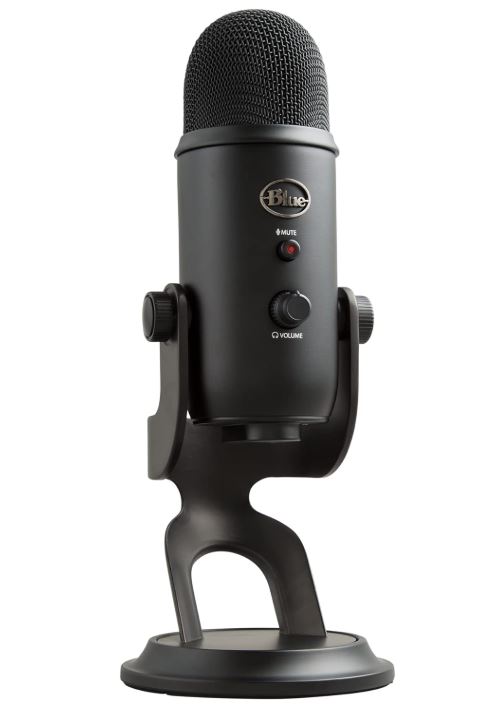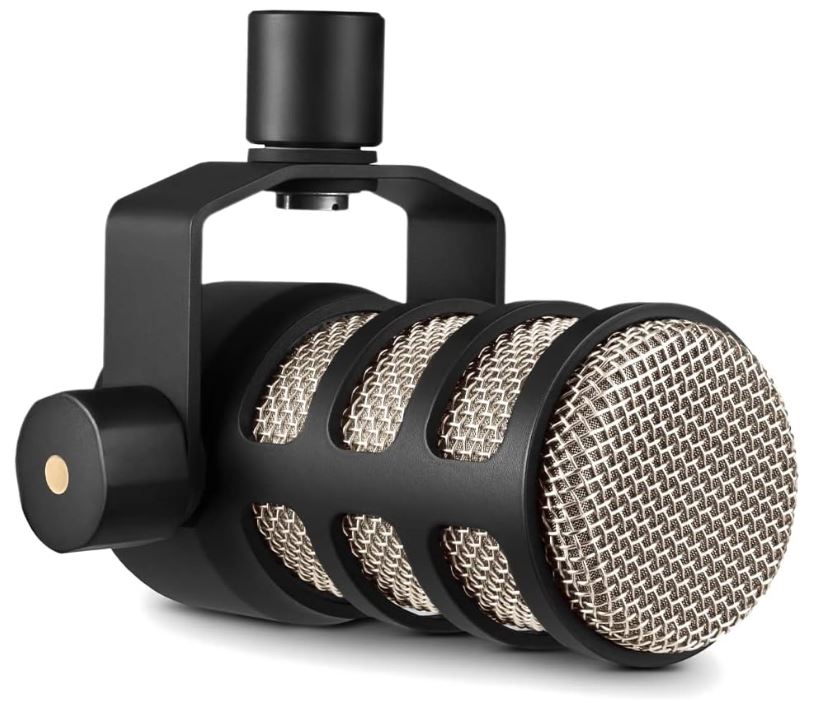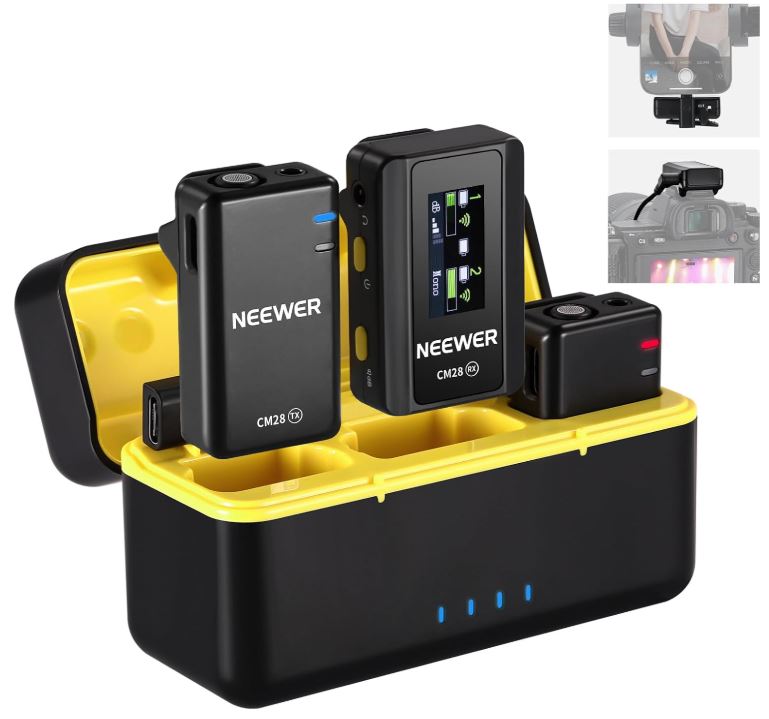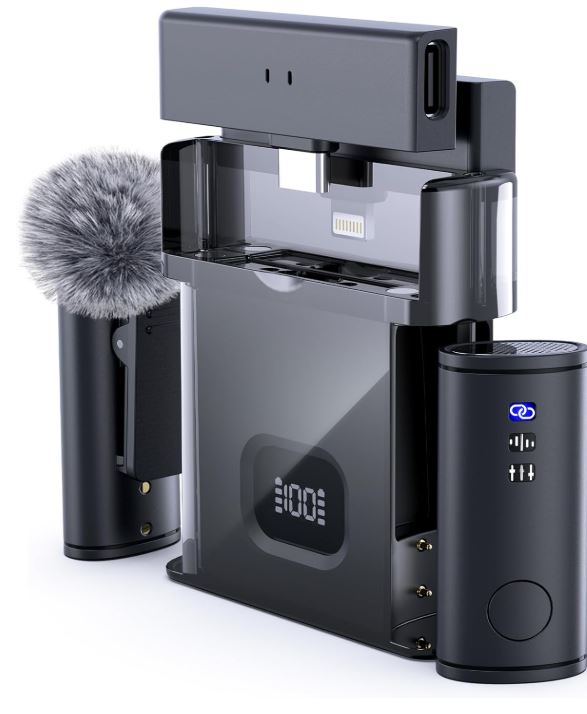Discover the power of a virtual microphone system—an essential tool for modern communication that can transform your digital presence!
Introduction to Virtual Microphone Systems
In an increasingly digital world, the virtual microphone system has emerged as a game-changer for communication and content creation. Imagine being able to enhance your audio experience without the constraints of traditional hardware. Did you know that studies show 70% of professionals believe clear audio significantly impacts their online meetings? With the rise of remote work and virtual events, understanding virtual microphone systems is more critical than ever.
Key Facts About Virtual Microphone Systems
| Feature | Description |
|---|---|
| Flexibility | Works with various software applications for seamless integration. |
| Quality | Delivers high-fidelity audio for clear communication. |
| Cost-Effective | Reduces the need for expensive physical hardware. |
Outline of Subtopics
- What is a Virtual Microphone System?
- How Virtual Microphone Systems Work
- Advantages of Using a Virtual Microphone System
- Common Applications of Virtual Microphone Systems
- Key Features to Look for in a Virtual Microphone System
- Top Virtual Microphone Software Solutions
- Setting Up a Virtual Microphone System
- Tips for Optimizing Audio Quality
- Virtual Microphone Systems for Gaming
- Virtual Microphone Systems for Podcasting
- Virtual Microphone Systems for Online Teaching
- Best Practices for Virtual Meetings
- Case Study: Successful Use of Virtual Microphone Systems
- Integrating Virtual Microphone Systems with Other Tools
- Future Trends in Virtual Microphone Technology
- Addressing Common Issues with Virtual Microphone Systems
- Expert Opinions on Virtual Microphone Systems
- Interactive Checklist for Choosing a Virtual Microphone System
- Frequently Asked Questions
- Glossary of Terms
- Conclusion and Call to Action
What is a Virtual Microphone System?
Our Top Picks - Best USB Microphones 🎙️
Looking for the perfect microphone? Check out our top-rated USB microphones for crystal-clear sound & studio-quality performance! 🎧✨
A virtual microphone system is a software-based solution that allows users to capture audio from their devices and transmit it as if it were coming from a physical microphone. This technology enables users to record, broadcast, or communicate without relying on traditional audio hardware. It effectively converts digital signals into audio inputs, making it a versatile tool for various applications.
Unlike conventional microphones, virtual microphone systems can run on multiple platforms and integrate with numerous applications, including video conferencing software, streaming services, and recording tools. This flexibility allows users to enhance their audio experience significantly, whether they are engaged in a remote meeting or creating content for an audience.
With the rise of virtual events and remote work, the demand for reliable audio solutions has skyrocketed. Virtual microphone systems have become an essential component for many professionals, allowing them to maintain high-quality audio standards without the need for extensive equipment.
How Virtual Microphone Systems Work
Virtual microphone systems operate by utilizing software drivers to interact with audio input devices. These systems capture audio signals from various sources, such as applications, and convert them into a format that can be recognized by other software as a microphone input. This process involves several key components, including:
- Audio Routing: This involves directing audio signals from one application to another, enabling seamless communication.
- Signal Processing: The audio signals may undergo processing to enhance clarity, reduce noise, or apply effects.
- Integration with Software: Virtual microphones can interface with various applications, allowing users to choose where the audio is sent or recorded.
Our Top Picks - Best Wireless Microphones 🎤
Looking for a wireless solution? Check out our top-rated wireless microphones for hassle-free, high-quality sound! 🎶✨
For instance, a user might want to combine audio from a media player with their voice in a streaming application. A virtual microphone system allows for this combination, enhancing the overall audio experience for the audience.
Advantages of Using a Virtual Microphone System
There are numerous advantages to utilizing a virtual microphone system, making it a preferred choice for many professionals:
- Cost-Effective: Without the need for expensive hardware, users can achieve high-quality audio at a fraction of the cost.
- Portability: Since virtual microphone systems are software-based, they can be used on various devices, making them ideal for remote work.
- Enhanced Audio Control: Users can manipulate audio signals in real-time, allowing for a more personalized audio experience.
Moreover, these systems often come with built-in features like noise reduction and echo cancellation, which help improve sound quality further. This is especially beneficial for individuals who frequently engage in online meetings or content creation.
Common Applications of Virtual Microphone Systems
Virtual microphone systems are utilized across various industries and applications:
- Video Conferencing: Enhance audio quality in virtual meetings and webinars.
- Streaming: Streamers can mix audio from games, music, and their voice for a richer experience.
- Podcasting: Podcasters can record high-quality audio without needing extensive hardware.
Each of these applications requires different features from a virtual microphone system, such as low latency for gaming or high fidelity for music production. Understanding these applications helps users select the best solution for their needs.
Key Features to Look for in a Virtual Microphone System
When selecting a virtual microphone system, consider the following features:
- Compatibility: Ensure the software is compatible with your operating system and desired applications.
- Audio Quality: Look for systems that support high-resolution audio formats.
- User-Friendly Interface: A straightforward interface allows for easier navigation and setup.
Additionally, advanced features like virtual sound mixing, support for multiple audio sources, and customizable settings can enhance the user experience. Choosing a system that aligns with your specific needs is crucial for optimal performance.
Top Virtual Microphone Software Solutions
Several software solutions stand out in the virtual microphone market. Here are some top contenders:
- VB-Audio Virtual Cable: A popular choice for audio routing with minimal latency.
- VoiceMeeter: Offers comprehensive audio mixing capabilities, ideal for gamers and streamers.
- Audio Hijack: Great for recording and capturing audio from different applications.
Each of these solutions offers unique features tailored to specific use cases, helping users find the right tool for their audio needs. Researching user reviews and expert opinions can provide additional insights into the best options available.
Setting Up a Virtual Microphone System
Setting up a virtual microphone system involves a few straightforward steps:
- Download and Install: Start by downloading the chosen software from the official website and follow the installation instructions.
- Configure Audio Settings: Open the software and configure the audio settings to your preferences, ensuring the correct input and output devices are selected.
- Test the Setup: Conduct a test call or recording to verify that the audio quality meets your expectations.
It’s essential to familiarize yourself with the software’s features and settings to maximize its potential. Many platforms offer tutorials or support forums, which can be beneficial for troubleshooting and optimization.
Tips for Optimizing Audio Quality
To achieve the best audio quality from your virtual microphone system, consider the following tips:
- Choose the Right Environment: Record in a quiet space to minimize background noise.
- Utilize Headphones: Using headphones can prevent audio feedback and improve clarity during recordings or calls.
- Adjust Gain Levels: Ensure that the gain levels are set appropriately to avoid distortion or muffled sound.
Regularly testing and adjusting these settings can lead to significant improvements in audio quality, ensuring that your virtual meetings and recordings are professional and engaging.
Virtual Microphone Systems for Gaming
Gamers often require high-quality audio for an immersive experience. Virtual microphone systems can enhance gameplay communication by allowing players to integrate game audio with their voice. This setup enables clear communication with teammates while maintaining high-quality game sounds.
Many gaming platforms, such as Discord and Twitch, support virtual microphone systems, allowing for easy integration. Advanced features like voice modulation can also add a creative twist to gaming sessions, making them more entertaining for viewers.
Moreover, gamers can utilize virtual microphones to record gameplay footage with professional audio quality, enhancing the overall production value of their content.
Virtual Microphone Systems for Podcasting
Podcasters benefit immensely from virtual microphone systems, which provide high-quality audio recordings without the need for extensive hardware setups. These systems allow podcasters to record interviews remotely, ensuring that both parties have clear audio quality regardless of their location.
Additionally, many virtual microphone solutions offer built-in editing features, enabling podcasters to refine their audio before publishing. This capability can save time and resources, allowing creators to focus on content rather than technical challenges.
Successful podcasters often emphasize the importance of audio quality in engaging their audience, making virtual microphone systems an essential tool in their arsenal.
Virtual Microphone Systems for Online Teaching
Educators increasingly rely on virtual microphone systems to enhance online learning experiences. High-quality audio is crucial for effective communication, especially in virtual classrooms where clarity is key to student engagement.
These systems allow teachers to integrate multimedia resources, such as videos and music, into their lessons, providing a richer learning environment. Furthermore, features like noise suppression can help reduce distractions, ensuring that students can focus on the material being presented.
By utilizing virtual microphone systems, educators can create professional-quality lessons that resonate with students, making online learning more effective and enjoyable.
Best Practices for Virtual Meetings
To conduct successful virtual meetings, consider these best practices:
- Prepare in Advance: Test your equipment and software prior to the meeting to avoid technical difficulties.
- Maintain Eye Contact: Position your camera to maintain eye contact with participants, fostering better engagement.
- Be Mindful of Backgrounds: Choose a clean, professional background to minimize distractions.
Implementing these practices can significantly enhance the effectiveness of virtual meetings, ensuring clear communication and collaboration among participants.
Case Study: Successful Use of Virtual Microphone Systems
A renowned online education platform recently integrated virtual microphone systems into their courses, resulting in a 30% increase in student engagement and satisfaction. By utilizing high-quality audio, instructors were able to create immersive learning experiences that resonated with students.
The platform also reported a decrease in technical issues during live sessions, attributing this improvement to the reliability and flexibility of virtual microphone systems. This case underscores the importance of investing in quality audio solutions for successful online interactions.
Feedback from students highlighted the difference in audio quality, emphasizing that clear communication significantly impacted their learning experience.
Integrating Virtual Microphone Systems with Other Tools
Virtual microphone systems can be integrated with various tools and platforms to enhance audio functionality. For example, combining a virtual microphone with streaming software like OBS Studio or XSplit allows creators to mix multiple audio sources seamlessly.
Additionally, these systems can work alongside video conferencing tools such as Zoom or Microsoft Teams, enabling users to customize their audio settings for optimal performance. This integration is crucial for individuals who participate in webinars, workshops, or collaborative projects.
By understanding how to leverage these integrations, users can maximize their audio capabilities, ensuring that their content stands out in a crowded digital landscape.
Future Trends in Virtual Microphone Technology
The future of virtual microphone technology looks promising, with several trends emerging. One notable trend is the increasing use of artificial intelligence to enhance audio processing capabilities. AI-driven features may include real-time noise cancellation, voice recognition, and automatic audio adjustments based on environmental conditions.
Additionally, as remote work continues to grow, the demand for advanced virtual microphone systems will likely increase. Companies may invest in developing more user-friendly interfaces and integrating additional features to cater to diverse user needs.
Staying informed about these trends will help users make informed decisions when choosing virtual microphone solutions, ensuring they remain competitive in their respective fields.
Addressing Common Issues with Virtual Microphone Systems
While virtual microphone systems offer numerous benefits, users may encounter common issues. Here are some typical challenges and their solutions:
- Audio Latency: If you experience delays, check your buffer settings in the audio software and adjust them accordingly.
- Compatibility Issues: Ensure that your virtual microphone software is updated and compatible with your operating system.
- Audio Quality Problems: Experiment with different settings and environments to find the optimal setup for your specific needs.
By proactively addressing these issues, users can enhance their experience with virtual microphone systems and maintain high-quality audio standards.
Expert Opinions on Virtual Microphone Systems
“In my experience, virtual microphone systems have revolutionized the way we communicate online. The flexibility and audio quality they provide are invaluable for professionals across industries.” – Dr. Sarah Lee, Audio Technology Expert
Expert opinions like Dr. Lee’s underscore the importance of adopting virtual microphone systems in today’s digital landscape. They highlight the potential for these tools to enhance communication, collaboration, and content creation.
Interactive Checklist for Choosing a Virtual Microphone System
Use this checklist to help you select the best virtual microphone system for your needs:
- Compatibility with your operating system
- Desired audio quality specifications
- User-friendly interface
- Integration capabilities with other software
- Availability of customer support and resources
Frequently Asked Questions
What is a virtual microphone system?
A virtual microphone system is a software solution that captures audio from various sources and transmits it as if it were coming from a physical microphone, allowing for enhanced communication and content creation.
How do I set up a virtual microphone system?
To set up a virtual microphone system, download and install the software, configure the audio settings, and conduct a test to ensure optimal performance.
What are the benefits of using a virtual microphone system?
Benefits include cost-effectiveness, flexibility, enhanced audio control, and compatibility with various applications, making them ideal for remote work and content creation.
Can I use a virtual microphone system for gaming?
Yes, virtual microphone systems are excellent for gaming, allowing players to integrate game audio with their voice for a more immersive experience.
What features should I look for in virtual microphone software?
Key features include compatibility, audio quality, user-friendly interface, and advanced audio processing capabilities.
Glossary of Terms
- Virtual Microphone System
- A software-based audio solution that simulates a physical microphone.
- Audio Routing
- The process of directing audio signals from one source to another within software.
- Noise Suppression
- A feature that reduces background noise to enhance audio clarity.
Conclusion and Call to Action
In conclusion, virtual microphone systems are essential tools in today’s digital communication landscape, offering flexibility, quality, and cost-effectiveness. As technology continues to evolve, these systems will play an increasingly vital role in how we connect and create content.
Are you ready to enhance your audio experience? Explore different virtual microphone systems today and find the one that best fits your needs! Share your thoughts and experiences in the comments below, and let’s start a discussion on the future of audio technology!





